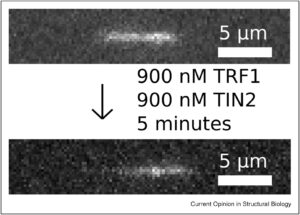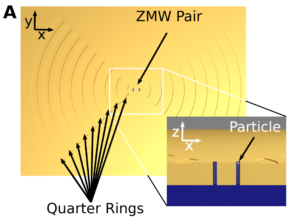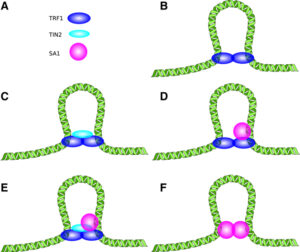Dr. Riehn Recent Publications
- Superfluorescence in microrods and microplates. SF Lim, R Ganoe, R Riehn, K Huang, G Han. Ultrafast Nonlinear Imaging and Spectroscopy XII, 13139, 131390X, 2024.
Abstract: Superfluorescence (SF) is a unique optical phenomenon that consists of an ensemble of emitters coupling collectively to produce a short but extremely intense burst of light. Despite our recently published works showing that room temperature anti-Stokes shifted SF were achieved in a few randomly assembled or even single lanthanide-doped upconversion nanoparticle (UCNP), the coupling required to produce and optimize Burnham-Chiao ringing (echoing of pulses) is not understood. Such ringing could be particularly useful to provide timing and multiplexing in potential applications as an alternative light source device. We previously found a lack of Burnham Chiao ringing in single nanocrystals, but strong ringing in a random cluster. The ordered assembly of these crystals will not only create a SF superburst, but also enable understanding of the periodicity of the Burnham Chiao ringing. This work explores SF microrod (MR) and microplate (Mplate), with enhanced SF performance and the closely spaced assembly of MR/Mplate result in a greater active volume, which gives rise to greater Burnham-Chiao ringing.
- Probing protein–DNA interactions and compaction in nanochannels. R Riehn. Current Opinion in Structural Biology, 88, 102914, 2024.
Abstract:  DNA confined to nanofluidic channels with a cross-section from tens to hundreds of nm wide and hundreds of microns long stretches in an equilibrium process free of flow or end tethering. Because DNA is free to move along the channel axis, its extension is exquisitely sensitive to DNA-DNA interactions and the DNA persistence length, as well as the contour length. We discuss how this sensitivity has been used to probe DNA-protein interactions at physiological concentrations of both DNA and proteins.
DNA confined to nanofluidic channels with a cross-section from tens to hundreds of nm wide and hundreds of microns long stretches in an equilibrium process free of flow or end tethering. Because DNA is free to move along the channel axis, its extension is exquisitely sensitive to DNA-DNA interactions and the DNA persistence length, as well as the contour length. We discuss how this sensitivity has been used to probe DNA-protein interactions at physiological concentrations of both DNA and proteins.
- Plasmonic interferometer for nanoscale refractometry. A Ghaffari, R Riehn. arXiv preprint arXiv:2406.06364, 2024.
Abstract:  We numerically study a double-slit interferometer that detects the modification of local phase and amplitude signal due to a refractive index contrast in a nanoplasmonic sensor after the plasmonic wave has been coupled to the farfield. Specifically, the sensor consists of two elongated zero-mode waveguides (ZMW) which function to launch surface plasmons as well as transmit light directly into the farfield. The surface plasmon waves are coupled to the farfield by surface gratings which cover one quarter of a bull-eye antenna, with different transmission directions. In the farfield, the coupled plasmon waves interfere with the directly transmitted reference wave, which reveals a combination of the phase and amplitude modification by the asymmetry of refractive index in the lumen of the ZMW. We report a drastic increase in sensitivity over interferometers that only utilize the directly transmitted fraction.
We numerically study a double-slit interferometer that detects the modification of local phase and amplitude signal due to a refractive index contrast in a nanoplasmonic sensor after the plasmonic wave has been coupled to the farfield. Specifically, the sensor consists of two elongated zero-mode waveguides (ZMW) which function to launch surface plasmons as well as transmit light directly into the farfield. The surface plasmon waves are coupled to the farfield by surface gratings which cover one quarter of a bull-eye antenna, with different transmission directions. In the farfield, the coupled plasmon waves interfere with the directly transmitted reference wave, which reveals a combination of the phase and amplitude modification by the asymmetry of refractive index in the lumen of the ZMW. We report a drastic increase in sensitivity over interferometers that only utilize the directly transmitted fraction.
- Superfluorescence in microrods and microfibers. SF Lim, R Ganoe, RE Riehn, G Han, HD Hallen. Photonic Heat Engines: Science and Applications VI, PC129020D, 2024.
Abstract: Superfluorescence (SF) is a unique optical phenomenon that consists of an ensemble of emitters coupling collectively to produce a short but extremely intense burst of light. Despite our recently published works showing that room temperature anti-Stokes shifted SF were achieved in a few randomly assembled or even single lanthanide-doped upconversion nanoparticle (UCNP), the coupling required to produce and optimize Burnham-Chiao ringing (echoing of pulses) is not understood. Such ringing could be particularly useful to provide timing and multiplexing in potential applications as an alternative light source device. We previously found a lack of Burnham Chiao ringing in single nanocrystals, but strong ringing in a random cluster. The ordered assembly of these crystals will not only create a SF superburst, but also enable understanding of the periodicity of the Burnham Chiao ringing. This work explores SF microrod (MR), with enhanced SF performance and the closely spaced assembly of MR result in a greater active volume, which gives rise to greater reabsorption of the initial emission, which is then re-emitted, leading to greater oscillatory fluorescence or Burnham Chiao ringing. We also correlate the MR dimension and orientation with the corresponding SF spectral properties.
- Assembly path dependence of telomeric DNA compaction by TRF1, TIN2, and SA1. Ming Liu, Hai Pan, Parminder Kaur, Lucia J Wang, Miao Jin, Ariana C Detwiler, Patricia L Opresko, Yizhi Jane Tao, Hong Wang, Robert Riehn. Biophysical Journal, 122 (10), 1822-1832, 2023.
Abstract:  Telomeres, complexes of DNA and proteins, protect ends of linear chromosomes. In humans, the two shelterin proteins TRF1 and TIN2, along with cohesin subunit SA1, were proposed to mediate telomere cohesion. Although the ability of the TRF1-TIN2 and TRF1-SA1 systems to compact telomeric DNA by DNA-DNA bridging has been reported, the function of the full ternary TRF1-TIN2-SA1 system has not been explored in detail. Here, we quantify the compaction of nanochannel-stretched DNA by the ternary system, as well as its constituents, and obtain estimates of the relative impact of its constituents and their interactions. We find that TRF1, TIN2, and SA1 work synergistically to cause a compaction of the DNA substrate, and that maximal compaction occurs if all three proteins are present. By altering the sequence with which DNA substrates are exposed to proteins, we establish that compaction by TRF1 and TIN2 can proceed through binding of TRF1 to DNA, followed by compaction as TIN2 recognizes the previously bound TRF1. We further establish that SA1 alone can also lead to a compaction, and that compaction in a combined system of all three proteins can be understood as an additive effect of TRF1-TIN2 and SA1-based compaction. Atomic force microscopy of intermolecular aggregation confirms that a combination of TRF1, TIN2, and SA1 together drive strong intermolecular aggregation as it would be required during chromosome cohesion.
Telomeres, complexes of DNA and proteins, protect ends of linear chromosomes. In humans, the two shelterin proteins TRF1 and TIN2, along with cohesin subunit SA1, were proposed to mediate telomere cohesion. Although the ability of the TRF1-TIN2 and TRF1-SA1 systems to compact telomeric DNA by DNA-DNA bridging has been reported, the function of the full ternary TRF1-TIN2-SA1 system has not been explored in detail. Here, we quantify the compaction of nanochannel-stretched DNA by the ternary system, as well as its constituents, and obtain estimates of the relative impact of its constituents and their interactions. We find that TRF1, TIN2, and SA1 work synergistically to cause a compaction of the DNA substrate, and that maximal compaction occurs if all three proteins are present. By altering the sequence with which DNA substrates are exposed to proteins, we establish that compaction by TRF1 and TIN2 can proceed through binding of TRF1 to DNA, followed by compaction as TIN2 recognizes the previously bound TRF1. We further establish that SA1 alone can also lead to a compaction, and that compaction in a combined system of all three proteins can be understood as an additive effect of TRF1-TIN2 and SA1-based compaction. Atomic force microscopy of intermolecular aggregation confirms that a combination of TRF1, TIN2, and SA1 together drive strong intermolecular aggregation as it would be required during chromosome cohesion.
- A nanophotonic interferometer. A Ghaffari, S Kashani, K Do, K Weninger, R Riehn. Nanotechnology, 34 (18), 185201, 2023.
Abstract:

The transmission of light through sub-wavelength apertures (zero-mode waveguides, ZMW) in metal films is well-explored. It introduces both an amplitude modulation as well as a phase shift to the oscillating electromagnetic field. We propose a nanophotonic interferometer by bringing two ZMW (∼100 nm diameter) in proximity and monitoring the distribution of transmitted light in the back-focal plane of collecting microscope objective (1.3 N.A.). We demonstrate that both an asymmetry induced by the binding of a quantum dot in one of the two ZMW, as well as an asymmetry in ZMW diameter yield qualitatively similar transmission patterns. We find that the complex pattern can be quantified through a scalar measure of asymmetry along the symmetry axis of the aperture pair. In a combined experimental and computational exploration of detectors with differing ZMW diameters, we find that the scalar asymmetry is a monotonous function of the diameter difference of the two apertures, and that the scalar asymmetry measure is higher if the sample is slightly displaced from the focal plane of the collecting microscope objective. An optimization of the detector geometry determined that the maximum response is achieved at an aperture separation that is comparable to the wavelength on the exit side of the sensor. For small separations of apertures, on the order of a quarter of the wavelength and less, the signal is strongly polarization dependent, while for larger separations, on the order of the wavelength or larger, the signal becomes essentially polarization-independent.
